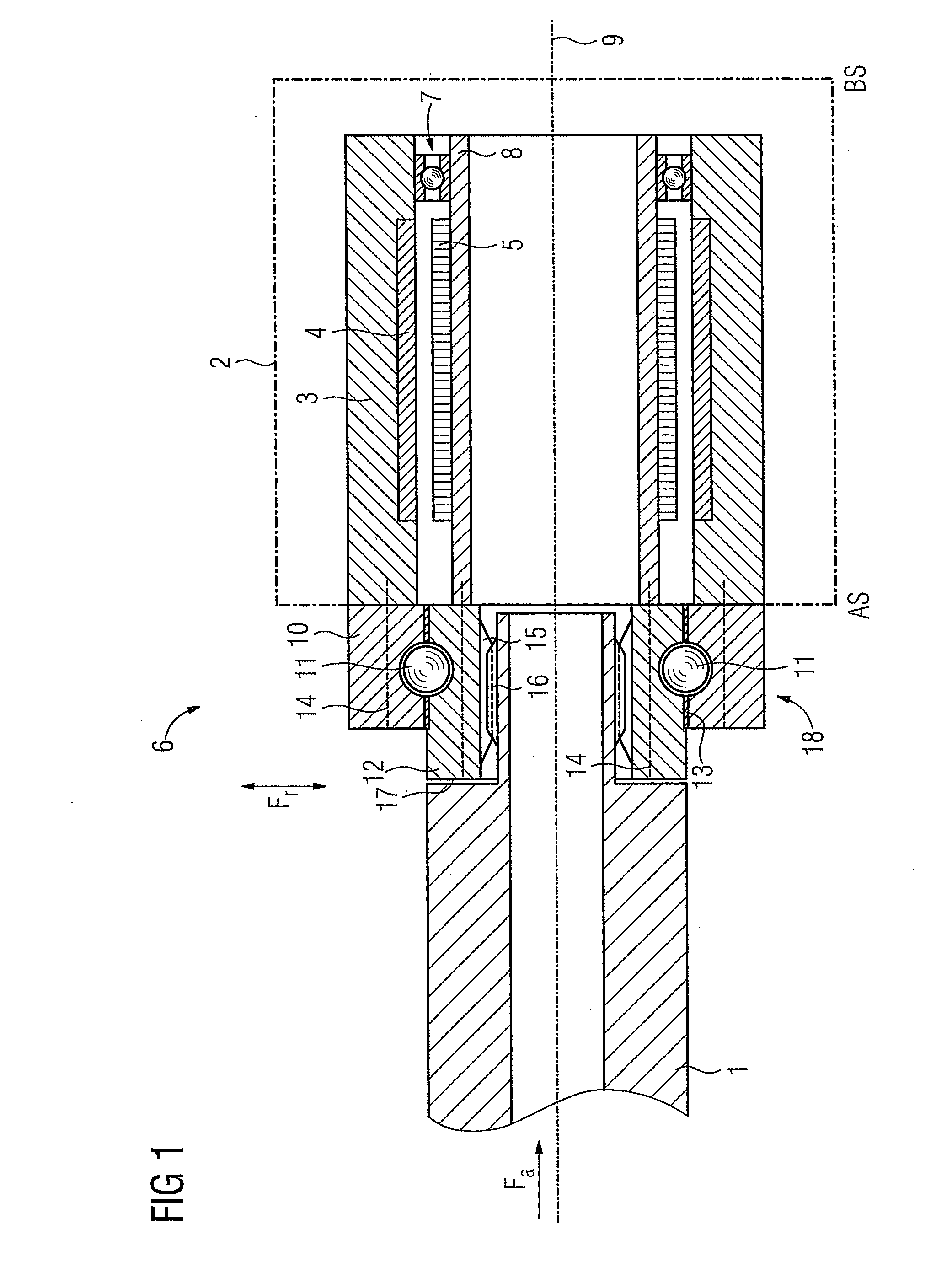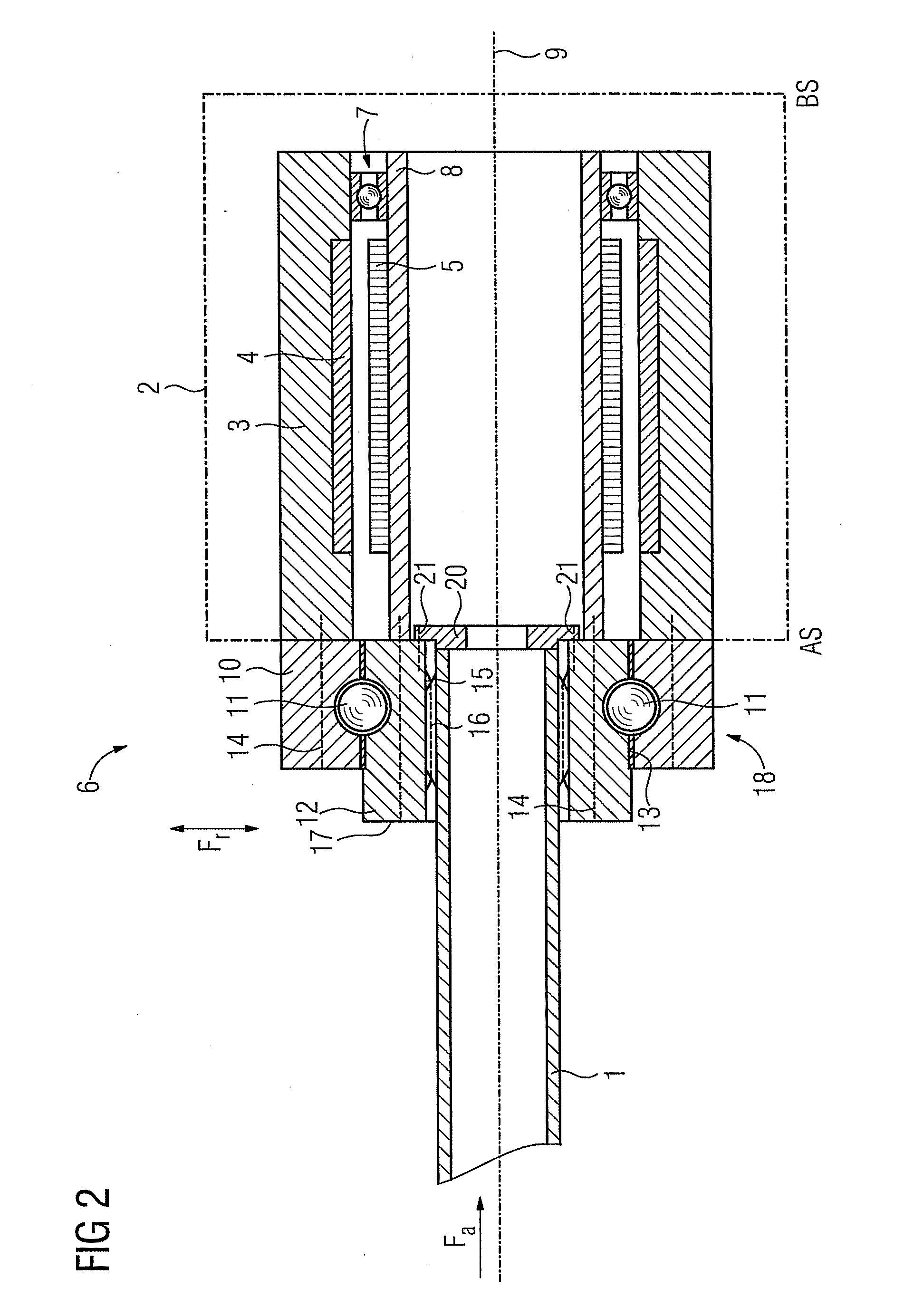Drive facility
- Summary
- Abstract
- Description
- Claims
- Application Information
AI Technical Summary
Benefits of technology
Problems solved by technology
Method used
Image
Examples
Embodiment Construction
[0021]FIG. 1 shows a schematic representation of a drive facility 6, which is connected to a load shaft 1. The conventionally known coupling facility is realized in order to couple the load shaft 1 to the engine shaft 8 of a motor 2 in the form of a bearing 18. The coupling is realized as such using a bearing arranged outside the motor 2.
[0022]The bearing 18 has an outer ring 10, an inner ring 12 and several rolling elements 11, which are embodied as balls within the scope of the exemplary embodiment. The outer ring 10 is sealed off from the inner ring 12 by means of one individual or several seals 13, so that no lubricating liquid can leave the bearing from the rolling elements. Additional sealing components can herewith be dispensed with outside the bearing.
[0023]The outer and inner rings almost completely enclose the rolling elements. The bearing can transmit both an axial force Fa as well as a radial force Fr from the load shaft 1 onto the motor 2 in respect of an axis of rotati...
PUM
 Login to View More
Login to View More Abstract
Description
Claims
Application Information
 Login to View More
Login to View More - R&D
- Intellectual Property
- Life Sciences
- Materials
- Tech Scout
- Unparalleled Data Quality
- Higher Quality Content
- 60% Fewer Hallucinations
Browse by: Latest US Patents, China's latest patents, Technical Efficacy Thesaurus, Application Domain, Technology Topic, Popular Technical Reports.
© 2025 PatSnap. All rights reserved.Legal|Privacy policy|Modern Slavery Act Transparency Statement|Sitemap|About US| Contact US: help@patsnap.com



